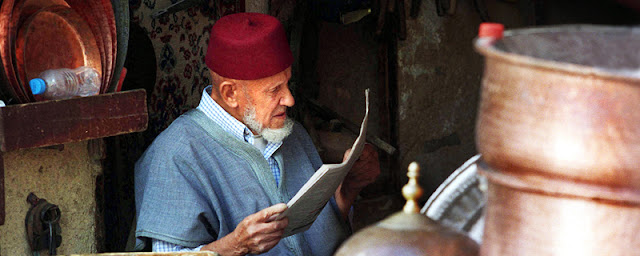On Monday, His Majesty King Mohammed VI presided over a ceremony at the Royal Palace of Rabat, which unveiled the programmes for the enhancement of the old medinas of Rabat and Marrakech, Casablanca and Fez
 |
| HM King Mohammed VI presides over the Rabat meeting |
The King ordered the development of the third phase of the programme of buildings threatened by ruin. For this the old Casablanca Medina has been given a budget of 300 million dirhams.
These new generation programmes aim to promote Morocco's ancient medinas, improve the living conditions of their inhabitants, preserve their architectural heritage, tangible and intangible, and promote their wealth and cultural authenticity.
At the beginning of this ceremony, the Minister of the Interior, Mr. Abdelouafi Laftit emphasized, in an address to His Majesty the King, that these programs, which proceed from a participative approach, support the rehabilitation projects of the old ones. medinas of Rabat, Marrakech and Fez.
The old medina of Rabat will see the restoration of ramparts, historic doors, of mosques and Zaouiyas, as well as the rehabilitation of the traditional foundouks and the provision of green spaces.
Under the program "Marrakech, city of permanent renewal" the city will see the preservation of more than 4,000 buildings, the rehabilitation of El Mellah neighbourhood, Ezrayeb and the Achouhada cemetery, as well as the development of tourist and spiritual tours of the old medina of Marrakech.
Fez, the kingdom's spiritual capital, will see the implementation of restoration programs for historic monuments and treatment of buildings threatened by ruin and a focus on the restoration of 27 historical monuments, including madrassas, foundouks, bridges, souks, tanneries, and bordjs.
These programs in Fez will benefit more than 1,600 people (craftsmen, shopkeepers, and students), allowing the restoration of more than 2,200 buildings threatening by ruin in the old medina of Fez.
According to the Minister of the Interior, the new upgrading program of the old medina of Rabat has a budget of about 325 million dirhams, with a contribution from the Hassan II Fund for Economic and Social Development of nearly 250 million dirhams.
The upgrading program of the old medina of Marrakech will cost 484 million dirhams. The Hassan II Fund for Economic and Social Development will contribute 150 million dirhams. The cost in the medina of Fez is nearly 583 million dirhams, including 100 million as the contribution of the Hassan II Fund for Economic and Social Development.
The Minister of the Interior indicated that HM King Mohammed VI ordered the development of the third phase of the program of habitats threatened by ruin as an integral part of the rehabilitation programme of the old medina of Casablanca with an overall budget of 300 million dirhams financed by the Hassan II Fund for Economic and Social Development.
The Minister of Tourism, Air Transport, Handicraft and Social Economy, Mr. Mohamed Sajid, pointed out that these enhancement programmes are aimed at strengthening the development of the medinas, improving their tourist and cultural attractiveness, the promotion of their civilizational and human heritage, in addition to improving the incomes of artisans and the development of the social economy.
Mr. Sajid said that the program for the old medina of Fes (2018-2023) concerns the rehabilitation of 39 historic sites of economic activity (Foundouks, workshops, souks), 10 mosques and Koranic schools, and the enhancement of 11 historical sites (water clock, museum of Jewish culture) and the restoration of Dar Al Makina. It is also planned that there will be 8 new car parks and the implementation of an electronic information system to enhance the tourist experience.
The minister also said that the upgrading program of the old medina of Marrakech (2018-2022) includes the preservation of historic monuments, the strengthening of the signaling system and lighting network, the establishment of interactive tourist information, and the development of public spaces and 6 car parks, including two underground.
The upgrading program of the old medina of Rabat (2018-2021) will focus on the development of the Place Bab El Had and places close to the central market, the strengthening of the signaling system, the setting up of interactive platforms for tourist information, pavement lanes (8 km), and the creation of two underground car parks in Bab El Had and Bab Chellah, with a total capacity of 1,090 vehicles.
SHARE THIS!













































